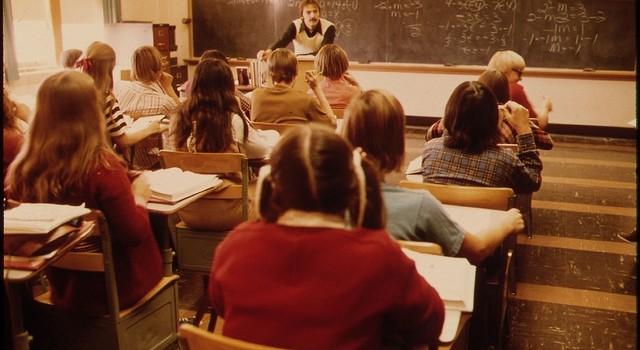Are you a visual person?
If you are, and someone is simply speaking to you (without visual aid), you really have to do your best to listen with purpose and intent, in order to get the full and granular detail of what they’re saying and meaning.
It can be hard work.
However, if someone presents to you using a visual element (brochure, diagram. images), your understanding, comprehension and retention tend to go way up.
Do you know what type of learner the financial advisor sitting in front of you is?
Too many wholesalers make the assumption that every advisor learns in the same manner.
That means that the wholesaler goes in with their yellow pad of paper and assumes that the financial advisor sitting in front of them is a yellow pad of paper learner.
Or, they limit their content offering to only digital media – using strictly their iPad to covey their product ideas and concepts.
Unfortunately the advisor might be a full color brochure kind of learner that wants, with said brochure in hand, to page through and read along with you.
Understanding a person’s preferred style of communicating (visual, audio, and kinesthetic) will help you understand how to format a presentation that has the highest likelihood of success.
Characteristics of Visual Learners*
Visual learners learn best by seeing information. The following characteristics are typical of many individuals with strong visual processing skills:
- Information presented in pictures, charts, or diagrams is easily remembered.
- Visual learners have strong visualization skills. They can look up (often up to the left) an “see” the information invisibly written or drawn.
- Visual learners can make “movies in their minds” of information they are reading. Their movies are often vivid and detailed.
- Visual-spatial skills such as sizes, shapes, textures, angles, and three-dimensional depths are strong.
- Visual learners often pay close attention to the body language of others (facial expressions, eyes, stance, etc.)
- Visual learners have a keen awareness of the aesthetics, the beauty of the physical environment, visual media, or art.
Characteristics of Auditory Learners*
Auditory learners learn best by hearing information. They can usually remember information more accurately when it has been explained to them orally.
The following characteristics are typical of individuals with strong auditory processing skills:
- Auditory learners can remember quite accurately details of information they hear during conversations or lectures.
- They have strong language skills, which include a well-developed vocabulary and an appreciation for words.
- The strong language skills often lead to strong oral communication skills. They can carry on interesting conversations and can articulate their ideas clearly.
- Because of a “fine tuned ear,” auditory learners may find learning a foreign language to be relatively easy.
- Auditory learners often have musical talents. They can hear tones, rhythms, and individual notes with their strong auditory skills.
Characteristics of Kinesthetic Learners*
Kinesthetic learners learn best by moving their bodies, activating their large or small muscles as they learn. These are the “hands-on learners” or the “doers” who actually concentrate better and learn more easily when movement is involved. The following characteristics are often associated with kinesthetic learners.
- Kinesthetic learners often wiggle, tap their feet, or move their legs when they sit.
- Kinesthetic learners were often labeled “hyperactive” as children.
- Because they learn through movement, kinesthetic learners often do well as performers: athletes, actors, or dancers.
- Kinesthetic learners work well with their hands. They may be good at repairing work, sculpting, art, or working with various tools.
- Kinesthetic learners are often well coordinated and have a strong sense of timing and body movement.
Mix Up Your Media/Delivery
Until you know more about your advisor, and/or dial in their preferred style, it makes sense to vary the formats that you present in.
Using a combination of digital media, brochures/one-sheets, along with good old fashioned across the desk diagram drawing, will insure that you are not losing the effectiveness of your message due to the advisor tuning out.
Understanding the type of learner your financial advisor is, and not making the mistake of only catering to one learning style, will increase the chances that the advisor will be more inclined to buy what you are selling.
(*source: http://www2.yk.psu.edu/learncenter/acskills/learnstl.html)


 9 What Ifs: A Wholesaler’s Approach To Working Conferences
9 What Ifs: A Wholesaler’s Approach To Working Conferences How To Become A Preferred Wholesaler – Matt Oechsli
How To Become A Preferred Wholesaler – Matt Oechsli 14 Characteristics Of The Memorable Wholesaler (Part Two)
14 Characteristics Of The Memorable Wholesaler (Part Two) Good Question, Glad You Asked #6: How Does A Wholesaler Best Implement Their Practice Management Strategies?
Good Question, Glad You Asked #6: How Does A Wholesaler Best Implement Their Practice Management Strategies? 10 Gifts You Should Buy Yourself This Season
10 Gifts You Should Buy Yourself This Season
Joe Seaton says
Rob,
Good article. I find that my iPad is a great starting point. If I turn it on during a conversation and the advisor engages and sits forward, I know it is a good way of educating. If the advisor does not engage, I will utilize that digital brochure in hard copy.
It is a challenge to hand someone a brochure who may or may not be kenisthestic, since they may very well be attention challenged and is already on the last page of the brochure when i am still on the first. Digital media work well with those with ADD.